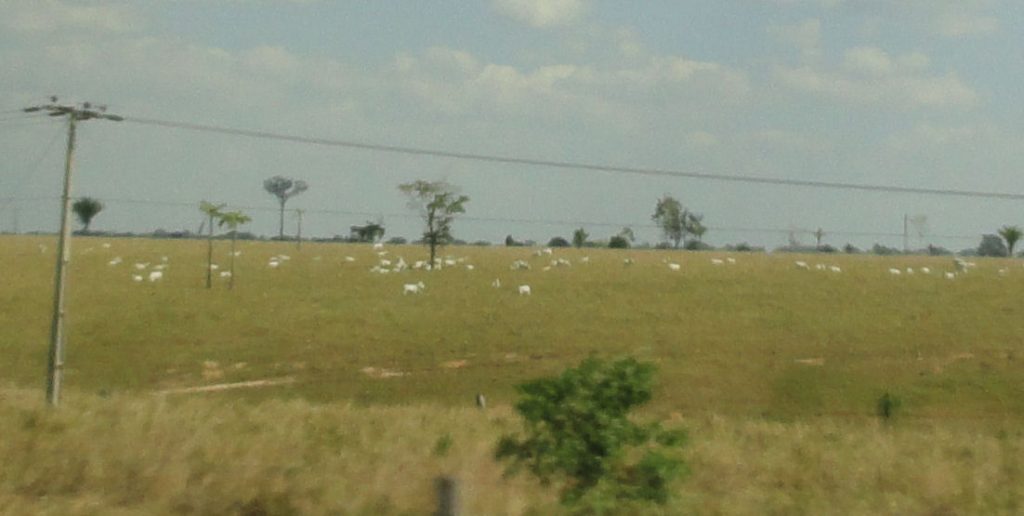
As it turns out, much deforestation is unnecessary and not even profitable in the long run. Just letting your cows wander around with the inferior forage is not the best strategy. Years ago in Acre, there was only one head of cattle for every three hectares of pasture and it took three years to raise a cow for slaughter. Today there are about two cows for every hectare and cows become steaks and hamburgers after only around eighteen months. If you do the math, you figure out that today ranchers could raise around 12 times the number of cows on the same acreage because of better techniques and better genetic stock. Beyond that, the better genetics of today’s cows means that they are bigger and better than their predecessors.
The favorite type of cattle in Acre is the The Nelore or Zebu. This is an off white animal with a hump and a big waddle, with most of its genetic stock originally from India. They generally do not eat them in India; in Brazil they do. his provided incentives to the Brazilian breeders that don’t exist in India. In fact the Nelore in Brazil is almost a different variety of cow from its Indian forebears. It grows faster and produces better meat faster. This is a good thing if your goal is to produce meat for sale and it is also easier on the environment, because there is less need for land and other inputs per pound of beef. The Nelore are well adapted to the tropics. They do well in converting poor quality food into good quality beef and require little care. Currently, of the roughly 160 million cows in Brazil, 100 million are Nelore. Their major vulnerability is that they are almost completely unadapted to cold temperatures. When it gets down around freezing, they literally drop dead where they are standing. I recall seeing that on television in Mato Grosso do Sul when they had a rare cold snap.
When I was in Brazil a quarter century ago the Nelore cattle (which were almost always call Zebu) were just becoming widespread. People I knew in Rio Grande do Sul said that they were not very good and didn’t produce good meat. (BTW – they still cannot raise them in RGS because of the cold.) Maybe they weren’t and didn’t back then, but they do today. Churrascaria now regularly feature a fatty but tasty cut of meat that comes from that hump. I have to assume that if they are selling the hump at least some of the picante and contra-fillet they are serving also is from the Nelore animals and it at least what I have been eating is good.
